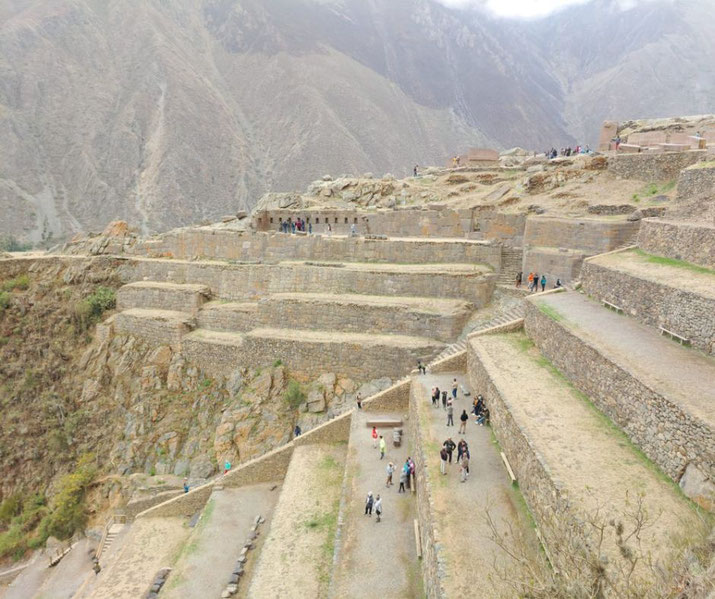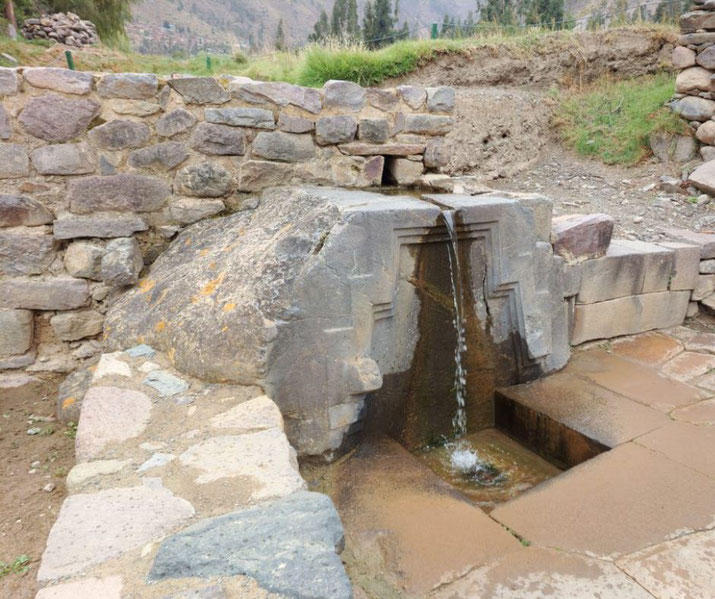The last Inca fortress: Ollantaytambo and the resistance against the Spanish conquistadors

Nestled within the verdant Sacred Valley of the Incas and flanked by the imposing Andean peaks, Ollantaytambo stands as a poignant testament to the grandeur of the Inca civilization.
This ancient town, which dates back to the late 15th century, remains one of the most well-preserved relics of Inca urban planning and architectural prowess.
Through its intricate maze of cobbled pathways, stone-walled houses, and ingeniously terraced hillsides, Ollantaytambo not only offers a glimpse into the past but also serves as a living museum, continually occupied and vibrantly alive.
What is Ollantaytambo?
Ollantaytambo is a town and an archaeological site located in the Sacred Valley of the Incas, in southern Peru.
It is situated approximately 60 kilometers northwest of the city of Cusco and is one of the most well-preserved Inca settlements that exist today.
Pre-Inca history
Long before the Inca established their mastery over the region, Ollantaytambo and the surrounding Sacred Valley were inhabited by diverse cultures whose legacies remain intertwined with the town's ancient roots.
Owing to the region's fertile grounds and a favorable climate, the area was a significant agricultural center, playing a critical role in the evolution of Andean cultures.
The earliest known inhabitants of the Ollantaytambo area were the Killke people, who lived in the region from 900 to 1200 AD.
Their existence is evidenced by a plethora of artifacts and pottery found in the area, testifying to the intricate craftsmanship and the society's agricultural lifestyle.
The Killke people are often credited with the construction of many megalithic structures which the Inca later integrated into their own architecture, implying the existence of a sophisticated society with advanced construction techniques.
Following the Killke, the region came under the sway of the mighty Wari Empire around the 7th century.
The Waris were known for their military prowess, social complexity, and urban planning skills.
They left their mark on Ollantaytambo through the creation of significant agricultural terraces, which became a defining feature of the landscape.
The Wari influence, while relatively short-lived, is considered instrumental in setting the stage for the subsequent emergence of the Inca civilization.
As the Wari Empire fell into decline, a power vacuum allowed for the rise of numerous regional polities, culminating in the emergence of the Kingdom of Cusco, later known as the Inca Empire.

Ollantaytambo under the Inca
With the ascendance of the Inca Empire in the 13th century, the town of Ollantaytambo underwent a monumental transformation.
This period marked the zenith of the town's architectural and cultural development, leaving an indelible imprint on the region that continues to captivate historians and tourists alike.
Ollantaytambo was established as an estate for Emperor Pachacuti, one of the most transformative figures in Inca history.
He initiated extensive urban planning projects, resulting in the construction of the town in its current form.
Much like the Inca capital of Cusco, Ollantaytambo was designed with a distinct grid-like layout, divided into canchas (blocks), which were further split into individual residences around a central courtyard.
This meticulous urban planning is a testament to the advanced architectural capabilities of the Inca civilization.
Incredible constructions at Ollantaytambo
One of the most remarkable features of Ollantaytambo is the ingenious terracing system.
These agricultural terraces, known as andenes, were masterfully carved into the hillside, facilitating effective irrigation and soil conservation.
The terraces were also used as a defense mechanism, transforming the town into a fortified complex.
Beyond their utilitarian function, these terraces offer a fascinating insight into the Inca's deep understanding of their natural environment and their ability to manipulate it for their benefit.

The Temple Hill, or the Sun Temple, is another impressive element of Ollantaytambo's Incan heritage.
This unfinished religious site, with its grand monolithic stones, exemplifies the Inca's sophisticated stone masonry techniques.
Though the temple remains incomplete, it continues to awe visitors with its scale and the technical prowess required for its construction.

The Inca also devised an intricate water management system within Ollantaytambo, including baths, aqueducts, and water channels that crisscrossed the town, providing a steady water supply.
This complex hydraulic system is still operational, further demonstrating the Inca's engineering proficiency.
Under Inca rule, Ollantaytambo flourished, serving as a critical administrative, agricultural, and religious hub, its strategic location offering a vital connection between the capital of Cusco and the lower Urubamba Valley.

Dramatic role of Ollantaytambo in the Inca resistance
Following the Spanish conquest of Cusco, Ollantaytambo became a stronghold for the Inca as they attempted to preserve their civilization from the invading forces.
The key figure in this chapter of Ollantaytambo's history is Manco Inca Yupanqui, the puppet ruler installed by the Spanish after they seized Cusco.
Eventually rebelling against the Spanish, Manco Inca withdrew to Ollantaytambo, using the town as a base for his uprising.
Ollantaytambo's strategic location and well-fortified terraces made it an excellent defensive position against the Spanish forces.
The peak of the resistance occurred during the Battle of Ollantaytambo in 1537. In this battle, Manco Inca and his forces managed to successfully repel the Spanish troops led by Hernando Pizarro, marking a significant, though temporary, victory for the Inca resistance.
Using the terrain to their advantage, the Inca defenders flooded the plains that the Spanish had to cross and launched attacks from the steep terraces, causing disarray among the Spanish troops and forcing their retreat.
Unfortunately, the victory at Ollantaytambo was short-lived. Manco Inca Yupanqui later abandoned Ollantaytambo, retreating to the remote jungle stronghold of Vilcabamba, which remained the last vestige of independent Inca rule until it too fell to the Spanish in 1572.

Post-conquest changes
The Spanish conquest, while ushering in a period of radical change for the entire Andean region, marked the beginning of a new chapter in Ollantaytambo's history.
The town, once a symbol of Inca resistance, gradually evolved under the influence of the Spanish colonial power.
In the years following the Spanish victory, Ollantaytambo, like many other Inca sites, faced considerable alteration.
The conquistadors often dismantled Inca structures, repurposing the finely cut stones to build Spanish-style buildings, churches, and estates, embedding their architectural footprint onto the landscape.
Nevertheless, many of Ollantaytambo's key features, such as the grid-like layout of the town and the terracing system, survived these transformations, providing continuity with its Inca past.
Although the Inca Empire officially ceased to exist after the fall of Vilcabamba in 1572, the indigenous population continued to uphold their traditional lifestyle and practices.
The Spanish introduced a system called "reducciones," designed to centralize the indigenous population into planned towns to facilitate Christianization and taxation.
In Ollantaytambo, the impact of this system was limited due to the town's existing urban layout, which closely resembled the structure of Spanish reducciones.
The colonial period also brought about a shift in the economy of Ollantaytambo.
While agriculture continued to play a significant role, the town also became part of the Spanish encomienda system, a forced labor practice that exploited the local population's labor for mining and farming to enrich the Spanish encomenderos.
In the centuries following the conquest, Ollantaytambo underwent a process of hybridization, where Spanish and Andean cultures intertwined, giving birth to a unique socio-cultural landscape.
What do you need help with?
Download ready-to-use digital learning resources
Copyright © History Skills 2014-2025.
Contact via email
With the exception of links to external sites, some historical sources and extracts from specific publications, all content on this website is copyrighted by History Skills. This content may not be copied, republished or redistributed without written permission from the website creator. Please use the Contact page to obtain relevant permission.





